So, you want to see some art. Well, OK then!
As summer rolls in and folks have a little more time to saunter about, it’s an ideal moment to remind everyone that there’s more to the city and its environs than beaches, mountains and parks. Sure, it’s nice to barrel roll down the grassy knolls near Kits Beach or jump in the ocean and splash about, but it’s also lovely to wander through an air-conditioned gallery for a few hours feeling the contours of your mind expand to take in new works of art: sculpture, installations and film.
So, if you’re in the Vancouver area, strap on your walking shoes and prepare your brain pan for a heaping helping of art on the town. You’ll find architectural drawings that sing with joy, paintings that reflect the urban Indigenous experience, deep dives into digital culture, as well as a photography exhibit that gleefully skewers the art world itself.
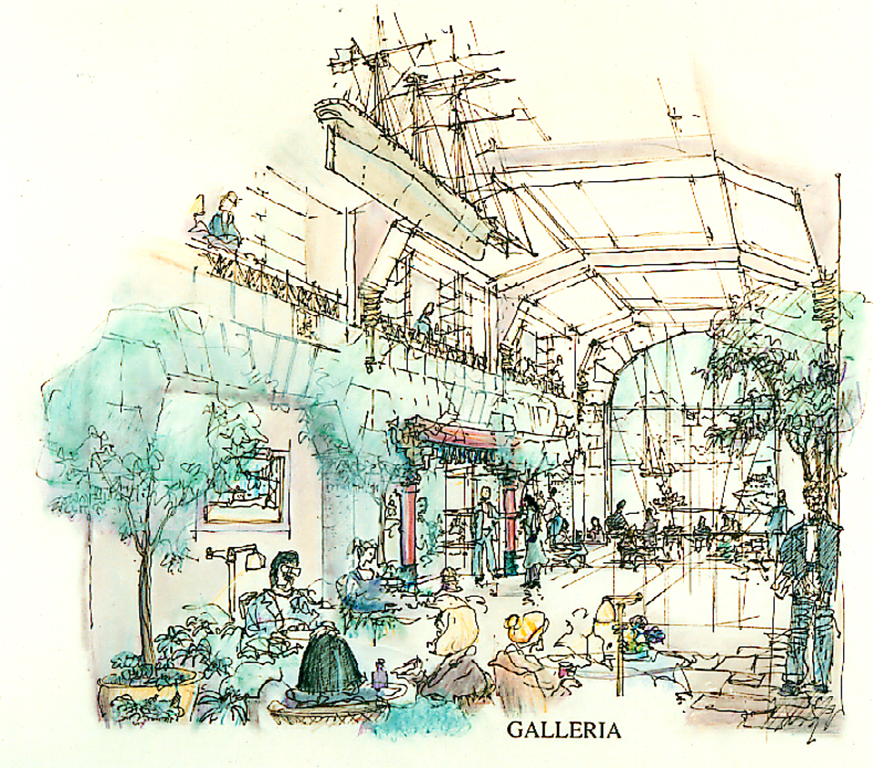
Where Coast Modernism meets Richard Scarry
A Twist of the Rules: The Architecture of Paul Merrick
The West Vancouver Art Museum
On view to July 23
The debate about whether Coast Modernism was a movement or a moment is still raging in architectural circles, but don’t worry too much about picking a side or a position. Simply enjoy the buildings that best embody this aesthetic, some of which were designed by architect Paul Merrick.
Merrick’s work is the subject of a West Vancouver Art Museum exhibition entitled A Twist of the Rules: The Architecture of Paul Merrick. The man has had profound impact on Vancouver. He worked on many landmarks that make up the downtown skyline, from the Marine Building to Cathedral Place, the Orpheum Theatre to the BC Hydro Electra Building.
The loveliest surprise in the show, however, lies in Merrick’s drawings. The deep charm, lyricism and innovation embodied in his architectural sketches for different projects are a reminder of the wild power of imagination.
A rendering of Cathedral Place in downtown Vancouver reminded me of an erudite, ultra-sophisticated version of author/illustrator Richard Scarry’s Busy, Busy Town, wherein the streets are populated with zippy little sportscars, honking buses and people in cool hats partaking of urban life. It’s an idealized vision, sure, but it’s also incredibly fun, bursting with summer joy.
In her introductory essay to the show, curator Hilary Letwin borrows a line from Ned Pratt, one of Merrick’s first employers, who divided architects into two distinct categories: neck-up and neck-down. In other words, the thinkers versus the feelers.
Merrick fell into the latter camp: “The neck-down architect taps into that portal of the human psyche that registers delight. They rely heavily on intuition and gut feeling, and more often win over the hearts as well as the minds of their clients.”
Amongst the many high-profile projects Merrick worked on, he also designed and constructed his own house in West Vancouver. A marvel of “carpenter Gothic,” Merrick House was a feat of economical engineering and good old-fashioned thrift. Constructed from cast-off glass, wood and stone, Merrick even used former mentor and architectural luminary Ron Thom’s old drawing board for the front door of the house.
The sketch for the house is an explosion of looping forest branches tucked around the central structure. From the initial drawing to the finished house is a journey, but the soul of the thing is right there, in the immediacy of those quickly hatched lines, crackling with life and beauty.
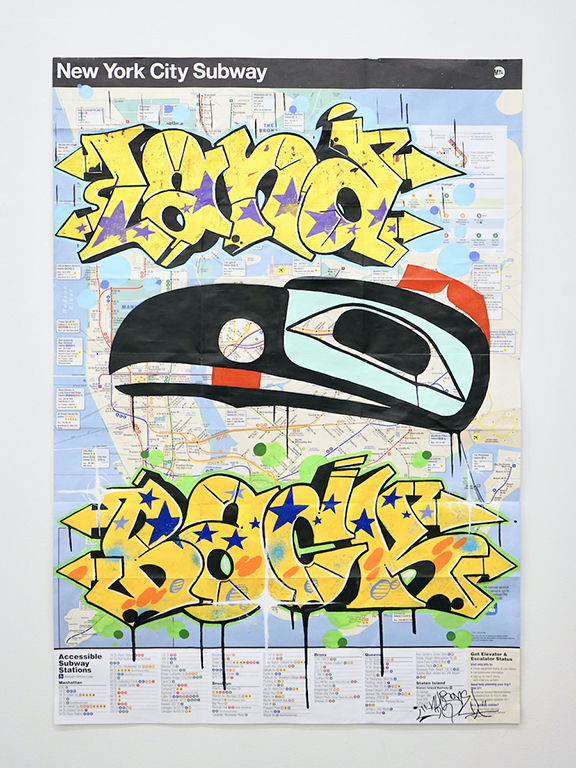
Eclecticism, innovation and fiery wit
True to Place
The Bill Reid Gallery of Northwest Coast Art
On view to March 19, 2023
Curated by Xémontalót Carrielynn Victor (Stó:lō), True to Place: stímetstexw tel xéltel, a collection of new work from 10 contemporary painters, took part of its title from an expression in Halq’emeylemqel dialect that translates to: “Keeping the pencil moving forward.” It is especially appropriate given that the pieces in the show blend the past, present and the future in fascinating ways.
Luke Parnell’s work is a case in point. The Nisga’a/Haida artist works in the digital realm, combining traditional imagery with software to create animated fusions of new and old. The artist’s process is delineated in a short film that documents the creation of The Drums are Sounding. It is strangely mesmerizing to watch as lines and forms emerge in lockstep, followed by blocks of colour, repeating in a loop so that it becomes like a visual march forward.
Some of the most blazingly original work in the show comes from Haida artist Corey Bulpitt. Part street art, part manifesto, Bulpitt’s graffiti paintings speak to urban Indigenous experience with wit, beauty and a good dose of humour. Whether it’s Haida imagery emblazoned over a New York City subway map in Raven Kept Walking or Bulpitt’s large-scale painting Untitled, a ferocious energy radiates out from the work, keeping viewers discombobulated in the most wonderful way possible.
On the other end of the scale from Bulpitt’s gritty aesthetic is the crystalline precision of Robert Davidson. As one of the masters of Haida art, Davidson has secured a place in the pantheons of great painters. The skill and control of his work hums like a high-power line, suffusing the very atmosphere with something akin to an electric current.
A spirit of eclecticism and innovation runs throughout the show, manifesting in different fashion in the work of Atheana Picha, Crystal Worl, Eliot White-Hill, Ocean Hyland, Shawn Hunt, Steve Smith and Thomas Jones.
In addition to the paintings in True to Place, the Bill Reid Gallery is also featuring Beaded Nostalgia, an exhibition of contemporary beading. It is well worth seeing, filled with puckish humour and extraordinary skill.
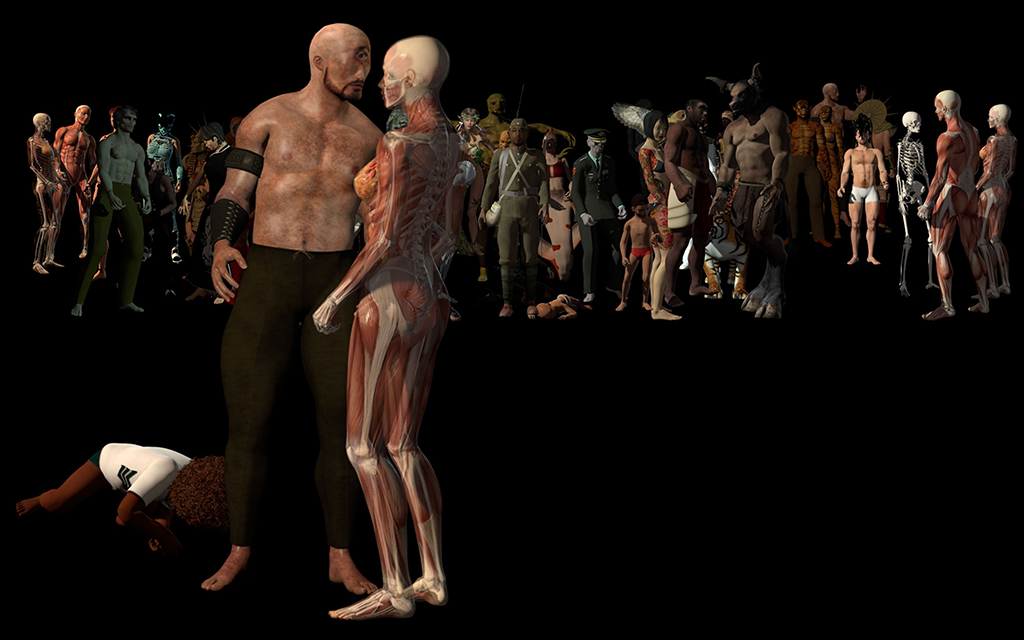
Digital culture, transmogrified
Ghosts of the Machine
The Polygon Gallery
On view to Aug. 14
The internet is a strange place. If you need any further evidence of this, a trip to the Polygon Gallery in North Vancouver will reassure of its veracity.
Ghosts of the Machine, the current exhibition at the gallery, takes as its informing idea all the strange, unsettling but ultimately beautiful manifestations of digital culture, transmogrified through the visions of contemporary artists.
It’s a curious mixture of things, moving from the creeping dread of Ho Tzu Nyen’s installation that makes use of John Donne’s poem “No Man is an Island” to the reproductive habits of undersea creatures. Don’t just stand at the water’s edge: jump in and dive deep.
Anne Duk Hee Jordan’s Ziggy and the Starfish is a good place to start. The installation, with its winking nod to David Bowie, is an immersion in topics ranging from gender fluidity to environmental degradation. Earlier iterations of the work have manifested different kinds of physical structures, but at the Polygon, the installation resembles an ocean wave, curling up and over. Nestled inside are pillows, hammocks and other things to loll about on while watching the film elements.
As you lounge in a swinging hammock, clutching a monstrous stuffed shrimp to your bosom, it’s okay to let the goofiness of the experience suffuse. Art can contain all manner of things, from the most profound to the downright ridiculous, even in the same piece. This is very much true of Anne Duk Hee’s work that bangs together complex ideas with slapstick humour.
Although the influence of anime, video games and social media is clear in Lu Yang’s work, Doku: Digital Alaya is actually contending with some very old ideas. The title of the work refers to the concept of ālayavijñāna, an Indian Buddhist term that refers to the storehouse of consciousness accrued over multiple lifetimes.
Despite Digital Alaya’s deep roots in religion and culture, there is an odd disconnect between the concept and the manifestation. The very slickness of the production works against a deeper contemplative experience and any lasting profundity gets danced off to the disco beat. But perhaps that is ultimately the point. If everything is transient, you might as well dance.
In the hands and minds of other artists, the concept of an online avatar opens up different avenues of invention and playfulness. Mohawk multimedia artist Skawennati uses the platform of Second Life to create alternate worlds where her digital personae can live free and unencumbered. T’uy’t’tanat-Cease Wyss uses the fluidity of the digital realm to dig into the natural world.
It’s a wild and woolly metaverse out there, but artists continue to make it their own.
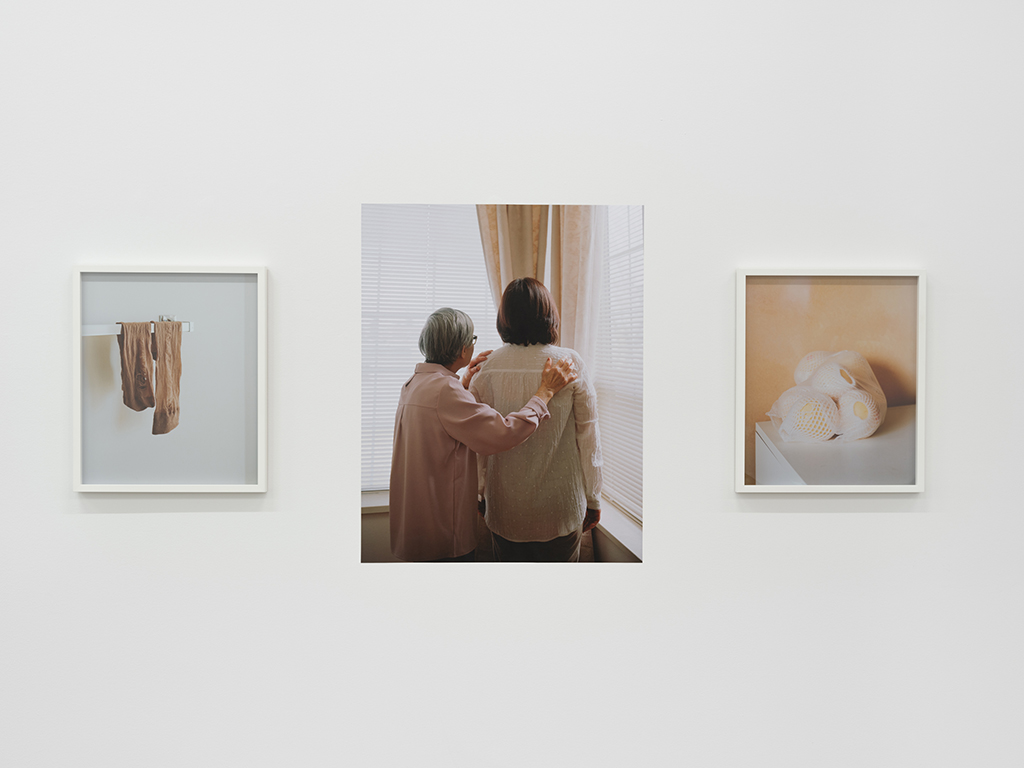
Gen Z represents
Around Us
The Burrard Arts Foundation
On view to Aug. 6
Around Us at the Burrard Art Foundation Gallery in Vancouver features work from nine contemporary artists working in the photographic medium. It’s an interesting selection that speaks to generational interests in identity and ambition, family and relationships.
The most on-the-nose example of the intersection of art and identity is The Influencers, a 23-minute short film from collaborators Olga Abeleva and Shizen Jambor. The film takes the boots to the pretentions of the art world. It’s a jokey, silly, wildly irreverent takedown of the boom-and-bust cycle of galleries, artists, critics as well as assorted hangers-on. There are plenty of visual gags as the narrative winds its way through openings, studio visits, all awash in loads of cheap white wine and most extreme arty fashion available. The higher up the artworld food-chain, the bigger the jacket, it would seem.
Other works in the show are less overt but nonetheless still pack a wallop. Of these Gloria Wong’s photographs of pears, well-worn nylon socks and an intimate portrait of Wong’s mother and grandmother (Ngan) possess a quiet power that is all the more impactful for its understated quality. Wong’s work, with its concentration on the domestic, the ordinary, the everyday stuff of living is truly remarkable.
The rest of the exhibition, featuring work from Rebecca Bair, Jeff Downer, Dennis Ha, Jake Kimble, Katie Kozak and Sylvain Sailly is equally fascinating.
While it’s tempting to spend the summer running around outdoors, the art world also contains multitudes of extraordinary experiences. So, take some time to take in some art! ![]()


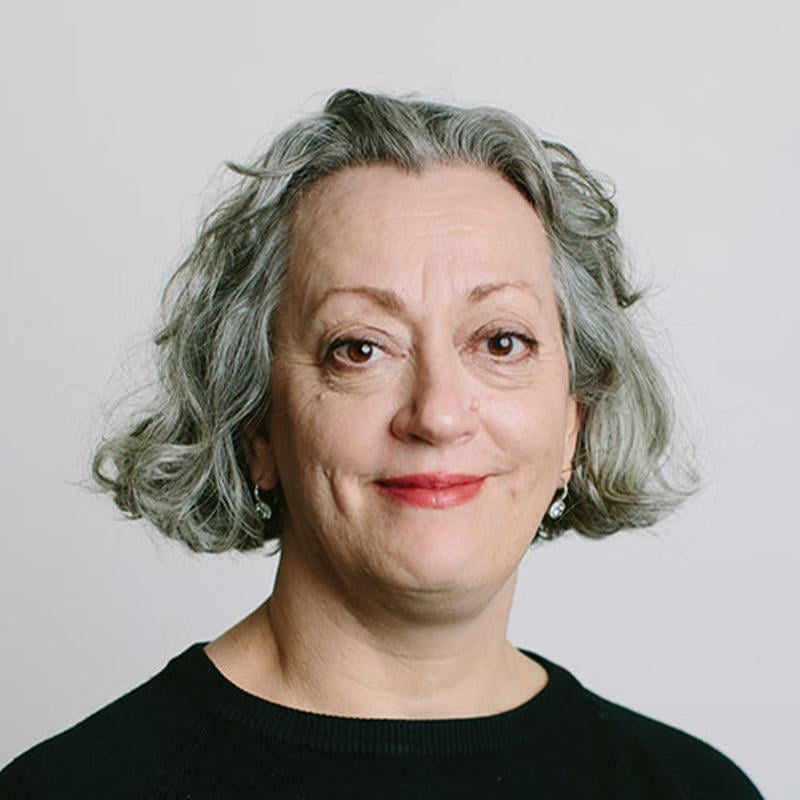

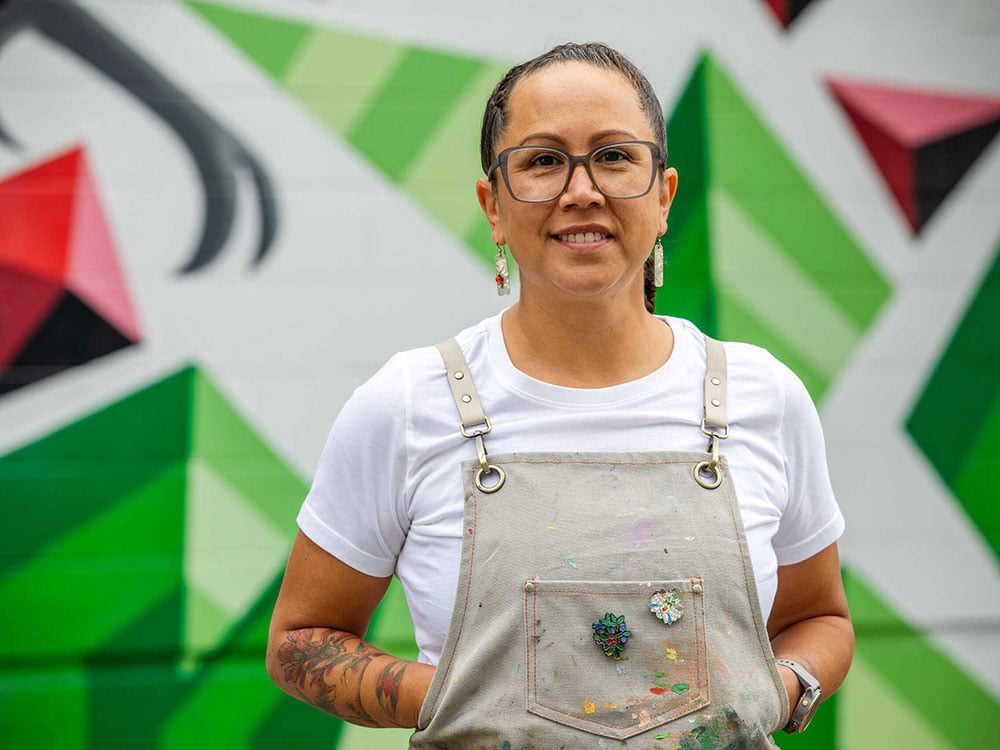












Tyee Commenting Guidelines
Comments that violate guidelines risk being deleted, and violations may result in a temporary or permanent user ban. Maintain the spirit of good conversation to stay in the discussion.
*Please note The Tyee is not a forum for spreading misinformation about COVID-19, denying its existence or minimizing its risk to public health.
Do:
Do not: